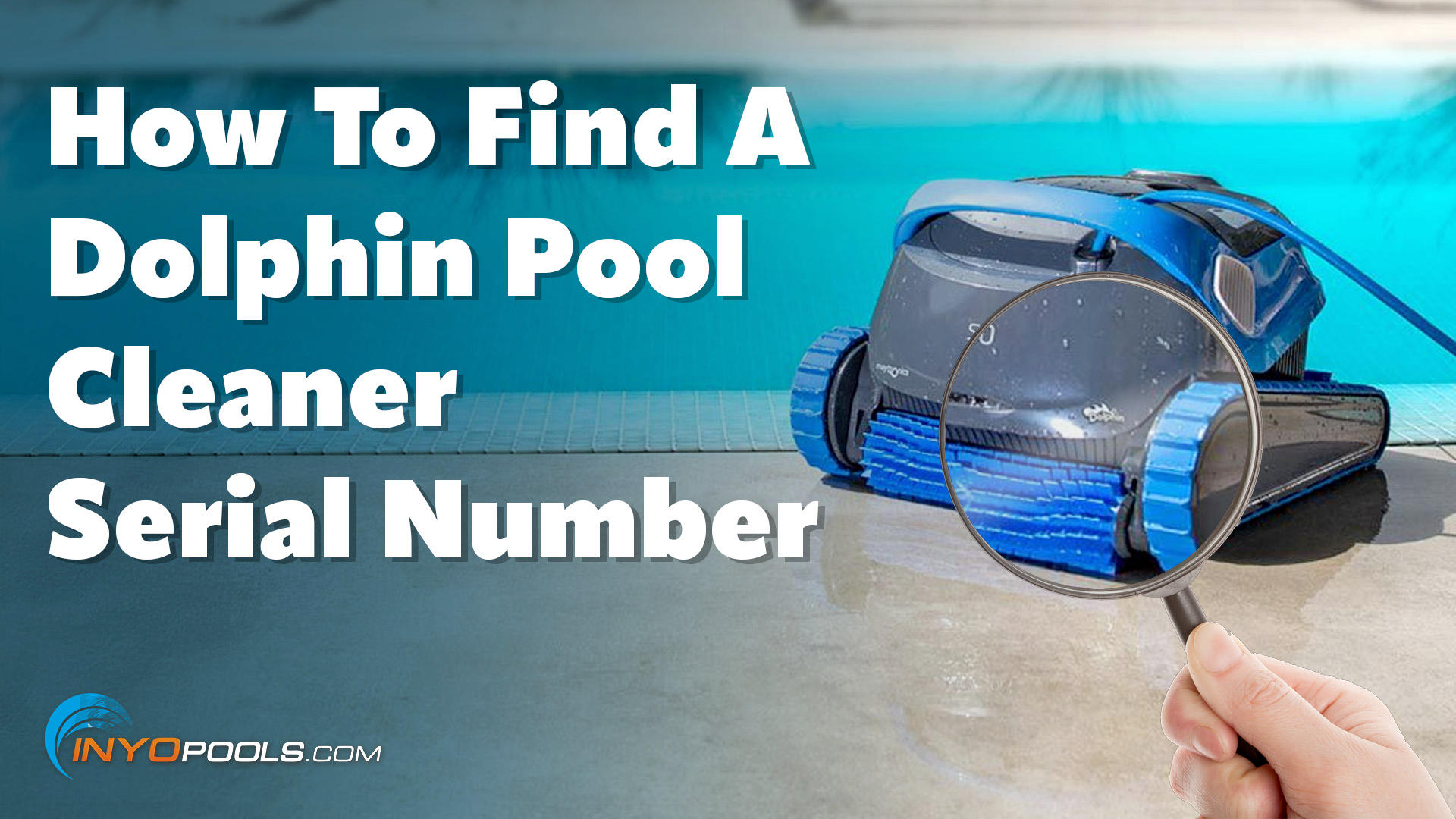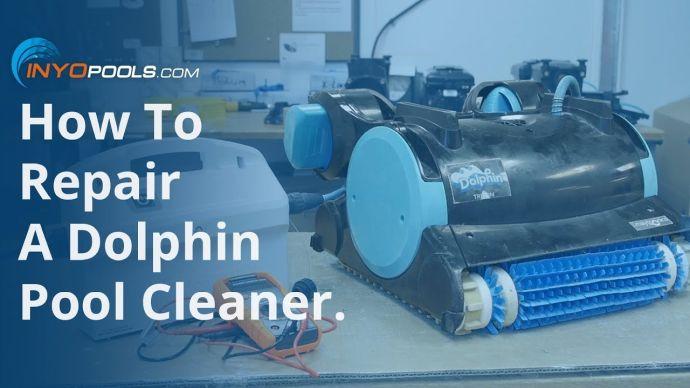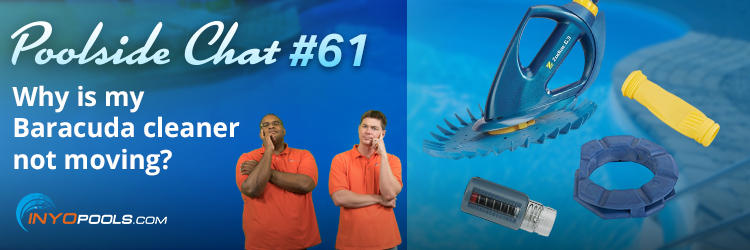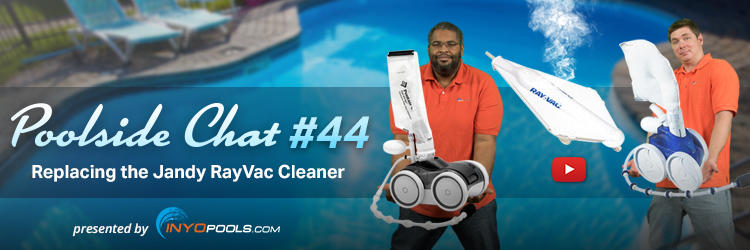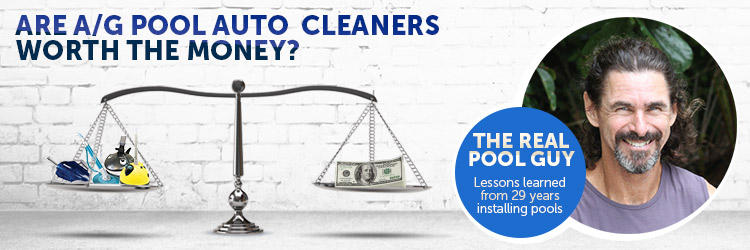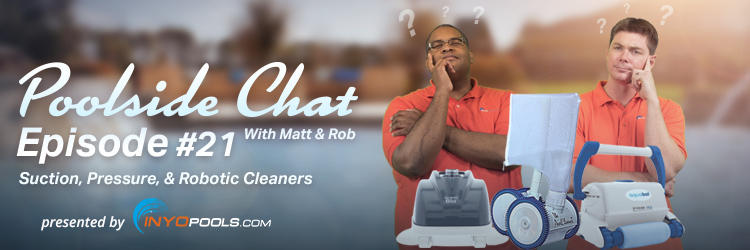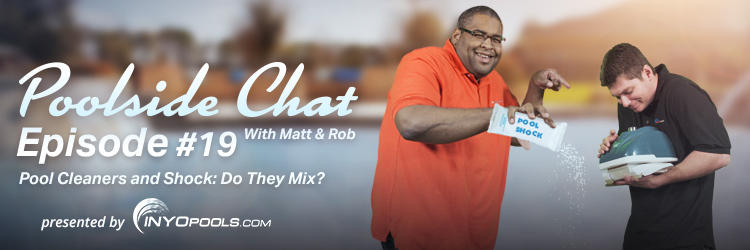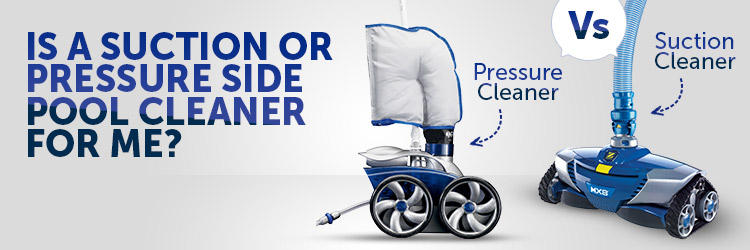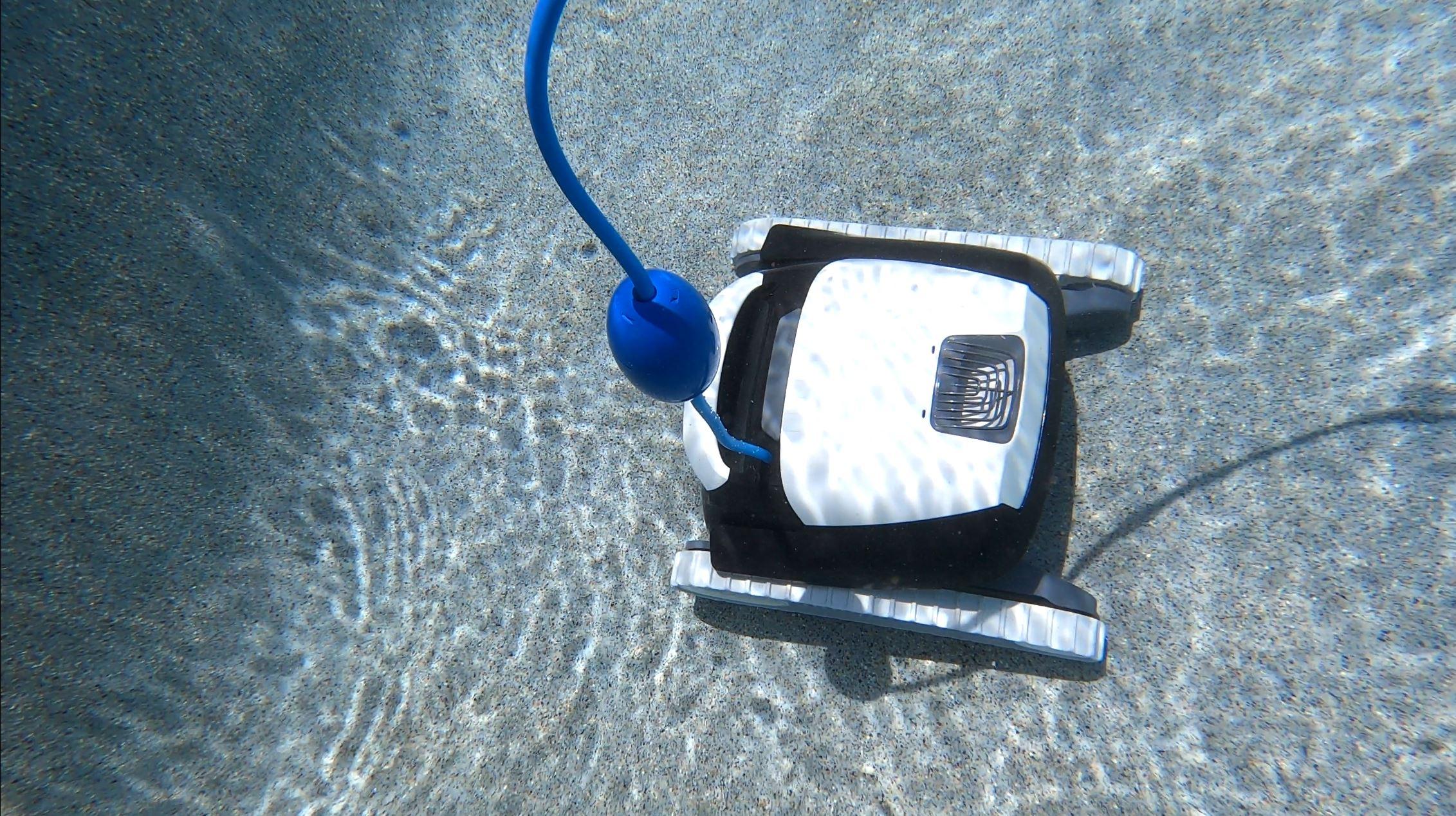
Pool Cleaner
Troubleshooting
Resources for fixing your cleaner problems.

Tip: Regular use and maintenance of your pool cleaner are essential to keeping your pool free of debris and minimizing strain on your filtration system. Clean out the cleaner’s filter bag or basket after each use, check for clogs, and inspect moving parts for wear. A well-maintained pool cleaner helps keep your pool looking fresh, reduces algae buildup, and can even extend the life of other pool equipment by reducing the load on the pump and filter.
Common Cleaner Problems
Click on a symptom that you are experiencing…
Cleaner Not Moving
Problem:
When a pool cleaner stops moving, it often signals a mechanical issue or an obstruction in the flow. A non-moving cleaner can lead to poor debris removal, uneven chemical distribution, and poor water clarity. Addressing the common causes can help restore the cleaner’s operation and keep your pool spotless.
Action Items:
- Low Pump Pressure or Flow Issues: Many cleaners rely on proper water pressure to move. If the pump isn’t running at optimal pressure, check the pump’s condition, clean out any filter or skimmer basket clogs, and ensure there are no obstructions in the hose or lines.
- Obstructed or Tangled Cleaner Hose: Hoses can become kinked, tangled, or blocked by debris, disrupting movement. Inspect and untangle the hose and clear out any debris. If the hose is old, consider replacing it to ensure smooth operation.
- Worn or Broken Cleaner Parts: Over time, components like wheels, belts, or gears can wear out. Check these parts and replace them as needed. For suction-side cleaners, inspect the diaphragm or flapper for tears or damage.
- Improper Weighting or Buoyancy: Some cleaners require additional weight to stay grounded and move effectively. If your cleaner floats too much or doesn’t hug the pool surface, verify the weight distribution, adjust it as recommended, or add a hose weight.
- Suction Line or Pressure Line Issues: If you have a pressure or suction-side cleaner, ensure that the cleaner is connected to the correct line and that there is enough pressure or suction. Clean any blockages in the line to restore optimal flow.
Cleaner is Moving Slowly or in Circles
Problem:
A pool cleaner that moves slowly or in circles often indicates an issue with water flow, mechanical parts, or incorrect weight distribution. This problem can prevent your cleaner from covering the pool effectively, leading to missed spots and reduced cleaning efficiency.
Action Items:
- Low Water Pressure or Flow Rate: If the cleaner is moving sluggishly, check the pump and filter system. A dirty filter or clogged pump basket can restrict water flow, reducing the cleaner’s performance. Clean the filter, pump basket, and skimmer to ensure optimal flow.
- Hose Length or Tangling Issues: For a cleaner that circles, the hose may be too short, or it might be tangled. Ensure the hose length is appropriate for your pool size and that it’s untangled. Straighten the hose and lay it in the sun for a bit to help remove kinks.
- Worn or Malfunctioning Cleaner Parts: Components like wheels, belts, or bearings can wear down over time, causing inefficient movement. Inspect these parts, replacing any worn or damaged components. For pressure-side cleaners, check the thrust jet to ensure it’s directing the cleaner properly.
- Improper Weight Distribution: For many cleaners, weight distribution affects movement. Add hose weights if necessary or adjust existing ones to prevent the cleaner from floating or looping in circles.
- Obstructions or Debris: Sometimes, small obstructions within the cleaner can impact movement. Clear any debris that may be lodged inside the cleaner or hoses.
Cleaner Getting Stuck Frequently
Problem:
When a pool cleaner repeatedly gets stuck, it can disrupt the cleaning process and leave certain areas of the pool uncleaned. This issue is common in pools with irregular shapes, steps, ladders, or varying floor levels. Fortunately, there are several adjustments and maintenance tips that can help your cleaner navigate smoothly.
Action Items:
- Obstacles in the Pool: Ladders, steps, or raised drains can trap cleaners. For robotic cleaners, check if the cleaner has a mode or setting to avoid obstacles. You may also consider adding a deflector ring, which can help some suction-side and pressure-side cleaners avoid getting caught.
- Incorrect Hose Length: If the hose is too short, the cleaner may not reach certain areas, causing it to get stuck in specific spots. Ensure the hose length matches your pool’s dimensions, and add additional hose sections if necessary.
- Worn or Damaged Wheels/Tracks: Broken or worn wheels and tracks can hinder mobility. Regularly inspect these parts and replace any damaged ones. Some robotic cleaners also benefit from brush replacements if they are worn down.
- Low Water Flow or Suction: Insufficient water flow to the cleaner can cause it to stop or get stuck. Check the pump, filter, and skimmer for clogs or debris that may be restricting water flow, and make sure all connections are tight.
- Incorrect Weight Positioning: For suction and pressure cleaners, the position of the weights on the hose affects the cleaner’s balance. Adjust the weights to help the cleaner maintain an even position, which can prevent it from tipping over or getting stuck in corners.
Cleaner Leaves Debris Behind
Problem:
If your pool cleaner is not picking up debris as it should, this can lead to unsightly dirt buildup and poor pool hygiene. This issue is often due to minor mechanical problems or improper setup that impacts the cleaner’s suction, flow, or overall performance. Here are some common causes and solutions to help your cleaner capture all debris effectively.
Action Items:
- Clogged or Full Filter Bag or Basket: A full or clogged filter bag, canister, or basket will reduce the cleaner’s suction power, causing it to miss debris. Empty and rinse these components regularly to maintain optimal cleaning performance.
- Worn Brushes or Suction Rings: For robotic and some suction-side cleaners, worn brushes, suction rings, or squeegees make it harder for the cleaner to pick up dirt and debris. Check and replace these parts if you notice wear.
- Incorrect Flow Rate: Inadequate or excessive water flow can prevent proper debris pickup. Adjust the pool pump speed or the cleaner’s regulator valve to ensure the flow rate aligns with the cleaner’s recommended settings.
- Damaged or Missing Vacuum Parts: Suction and pressure-side cleaners may leave debris behind if their vacuum or intake mechanism has damaged or missing parts, such as intake nozzles or vacuum skirts. Inspect and replace any broken parts to improve cleaning efficiency.
- Too-Heavy Debris: Some cleaners are not equipped to pick up heavier debris like pebbles, leaves, or sand. If your pool collects large debris frequently, consider a cleaner model designed for this type of debris or use a manual vacuum as needed.
Cleaner is Noisy or Making Unusual Sounds
Problem:
A pool cleaner making loud or unusual noises could indicate mechanical problems or issues with water flow that can impact its effectiveness. Addressing these sounds early can help prevent further damage and extend the life of your cleaner.
Action Items:
- Air in the Cleaner Line or Hose: If air enters the cleaner’s line, it can cause rattling or gurgling sounds. Check for leaks in the hose or fittings and ensure all connections are secure. Replace any cracked or worn hoses to prevent air from entering.
- Worn or Loose Parts: Over time, components like gears, wheels, and bearings may wear out or loosen, leading to clattering or grinding noises. Inspect the cleaner for any loose or visibly worn parts and tighten or replace them as needed.
- Obstructions in the Cleaner Mechanism: Debris stuck in the cleaner’s impeller, brushes, or gears can create grinding or whirring noises. Clear any blockages from these parts to ensure smooth operation.
- Incorrect Water Flow: Excessive water pressure can cause the cleaner to make a “whining” or high-pitched noise. Adjust the flow using the pool’s regulator valve or reduce the pump speed if possible to match the cleaner’s recommended settings.
- Debris in the Wheels or Tracks: For cleaners with wheels or tracks, trapped debris like pebbles or sand can cause clicking or popping sounds. Inspect and clean these areas to eliminate any obstructions.
Cleaner is Not Climbing Walls
Problem:
If your pool cleaner isn’t climbing walls, it may be due to improper settings, suction issues, or worn components. Pool cleaners are designed to navigate both the floor and walls of your pool, so diagnosing the issue can help restore full cleaning coverage.
Action Items:
- Low Suction or Pump Speed: Insufficient suction or low pump speed can prevent the cleaner from adhering to the walls. Check the pump to ensure it’s running at the proper speed and make any necessary adjustments to the suction settings for the cleaner.
- Clogged Filter or Pump Basket: Debris buildup in the filter or pump basket can reduce suction power. Clean out these areas regularly to ensure the cleaner has the necessary suction to climb.
- Improper Hose Length or Buoyancy: If the cleaner’s hose is too short or lacks enough buoyancy, it may have trouble reaching and sticking to the walls. Make sure the hose length is adequate for your pool size, and check the float placement to maintain proper balance.
- Worn or Damaged Climbing Pads or Tracks: The cleaner’s pads, wheels, or tracks help it adhere to pool surfaces. Over time, these components may wear down, losing traction. Inspect and replace any worn parts to improve climbing ability.
- Incorrect Flow Valve Setting: Some pool cleaners come with adjustable flow valves or thrust settings that determine how much force they use for climbing. Adjust these to increase wall-climbing performance.
- Water Chemistry and Surface Condition: Algae or slippery surfaces can affect the cleaner’s ability to climb. Regularly brushing and maintaining pool walls can help the cleaner get a better grip.


